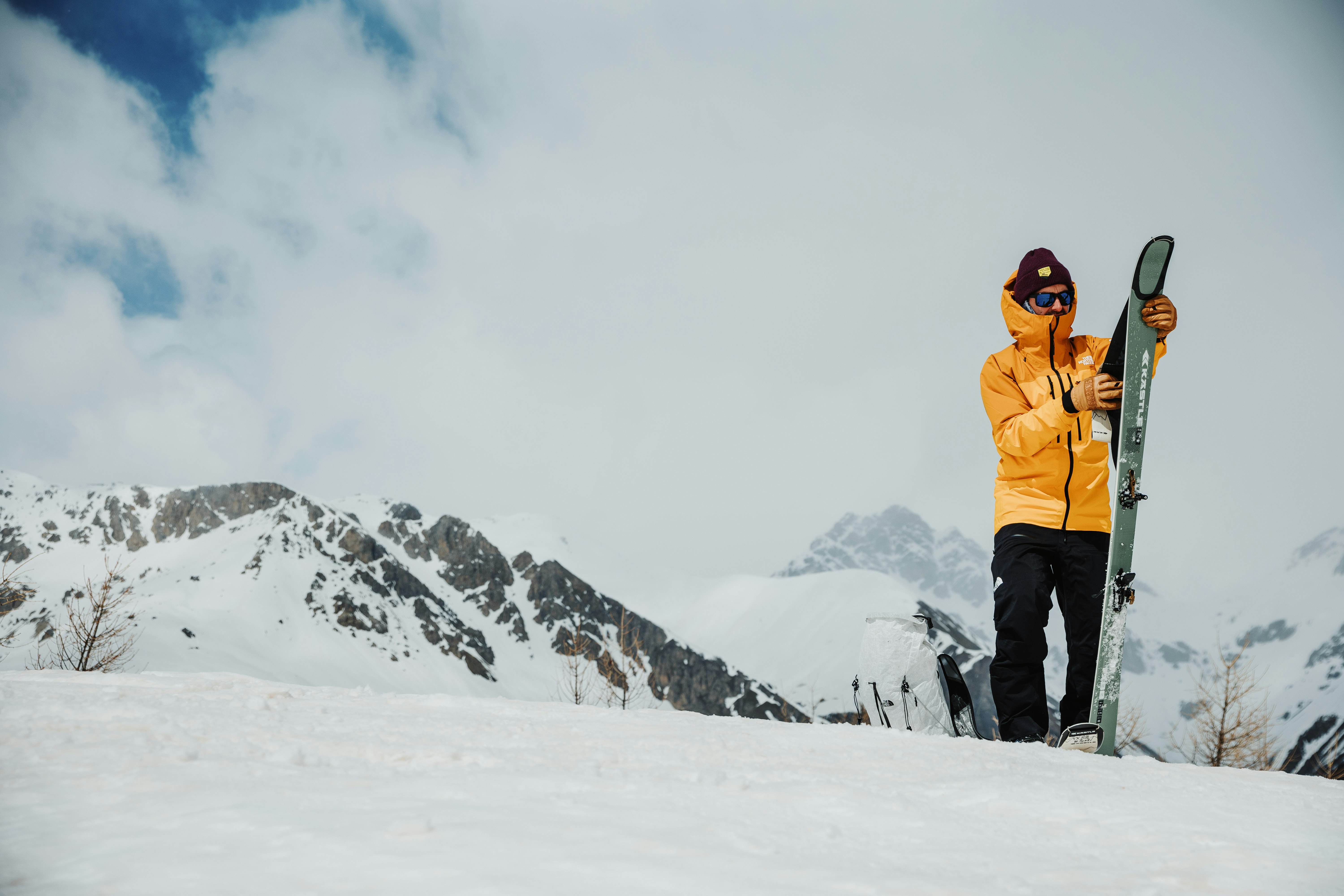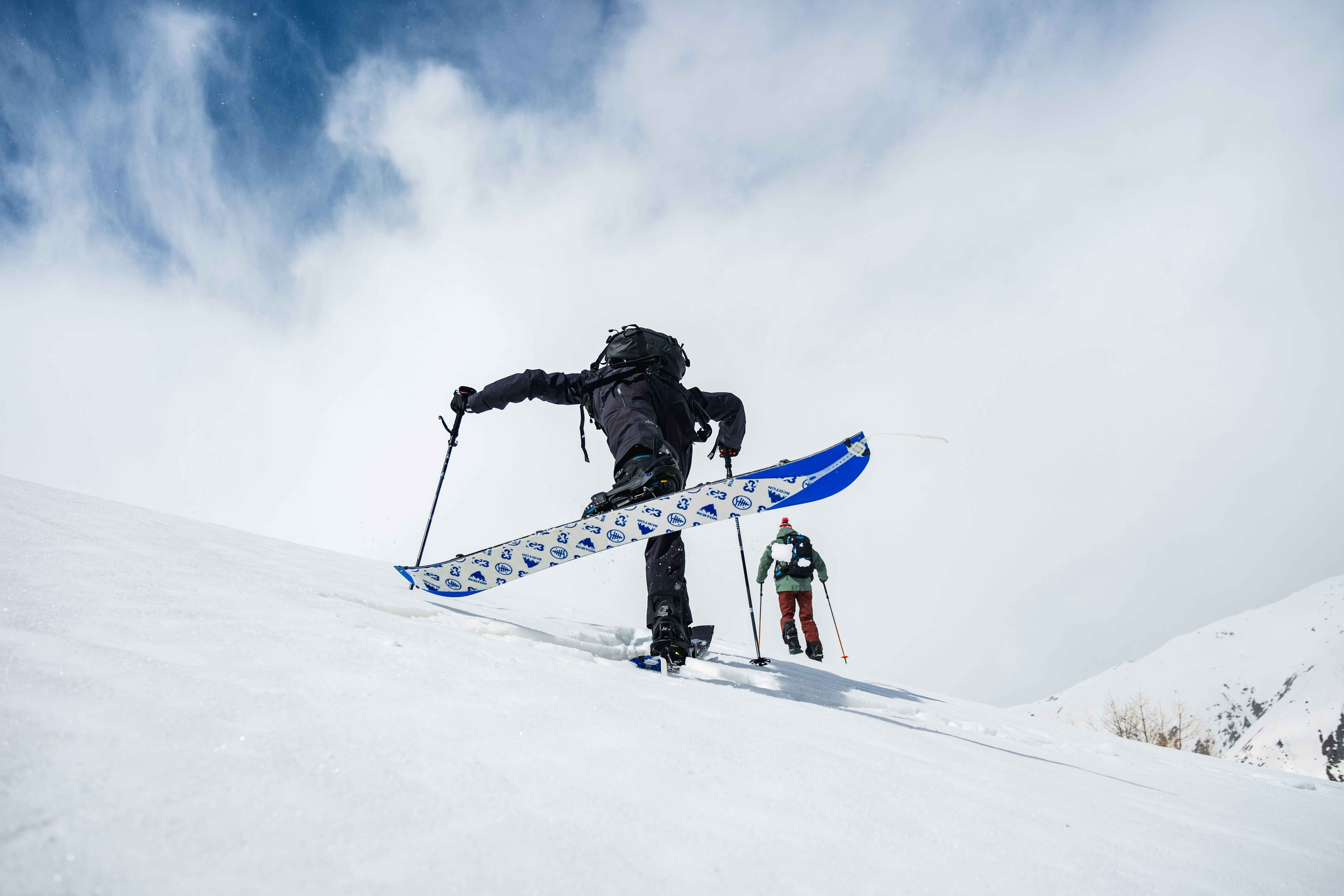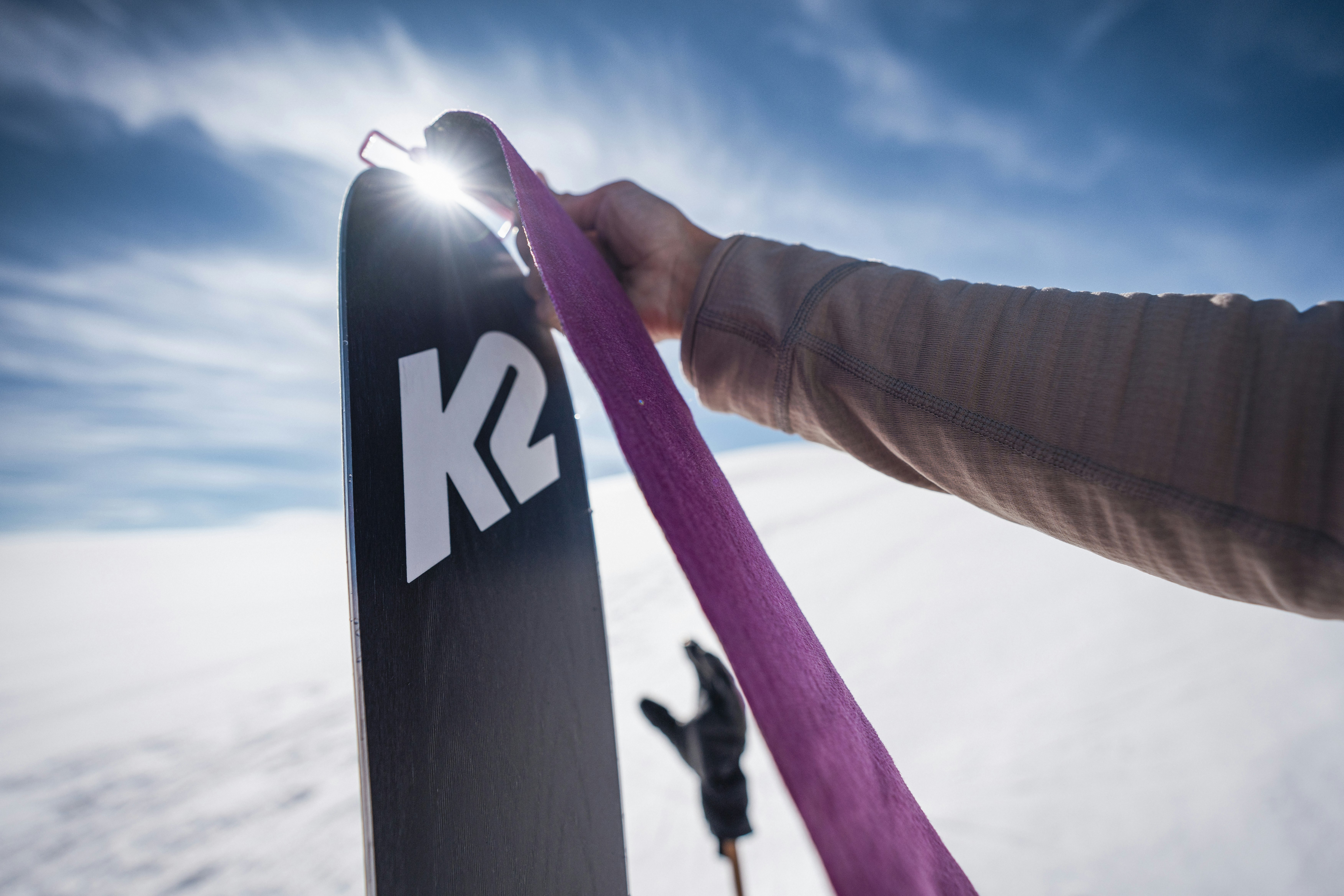Skimo skins
It's not all about grip
- Author: Claudio Primavesi
- Photographer: Giovanni DanieliMichele GuarneriDavide Terenzi
Despite innovative adhesives and synthetic materials, climbing skins are one of those products that have seen the fewest changes in recent decades, with the majority using traditional glues and mostly mohair in the plush. It’s a choice that requires careful thought as it’s one of the most important elements in your setup.
With the plethora of information and variables related to climbing skins, materials used for the plush, glue types and fixing hardware, we elected to use an approach that starts from the basics—one that considers usage cases and the user. We don’t claim that our suggestions will be infallible choices, but they are however the result of years of experience in the field and careful observation of market trends. But we’ll kick off with a couple of assumptions. First: your skins are the last decision you’ll make, after after deciding on skis, boots and bindings. Yet they should be the first, as we spend most of our tours skinning, and the wrong skin choice will make skinning more tiring and mean shorter ascents. Second, little has changed in the world of skins in recent decades. Exaggerating a little, we could say that we’re all basically using the same products. Over the years, skins have come out that offer better glide and improved durability. We've seen models with plastic scales, and ones that use silicone to attach to ski bases. But essentially, we always return to the same materials—mohair or synthetic plush—and hot or hybrid glue+gel adhesives. We eagerly await the results of extended use of the new Pomoca Tour Pro Explore with its dual-textured plush, which is different on the edges to increase grip and offers maximum glide in the center. This could be an interesting development.

While still good, the lower glide performance of modern plush materials is the result of environmental regulations that have banned fluorinated products and PFCs and PFOAs. The new treatments are valid and eco-friendly, but offer slightly poorer performance. The same goes for the adhesives: they’re increasingly eco-friendly and efficient but inevitably less durable than the old more polluting glues. No great loss, and better for the planet, but these are factors to consider. And they also explain some trends, for instance the en-masse revival of double-hook skins, which ensure good ski attachment, especially if well tensioned.
So what choices should you consider based on your needs?

Nilon, mohair o mix?
The skin is usually the last choice made, after the ski, the boot, and the binding. Yet it should be the first, because we spend most of our time with the climbing skins under the base of the skis, and with the wrong skin, everything becomes more difficult, and you won't get as far.
We’ll consider five different usage cases. The classic ski tourer, who sits squarely in our Tour category and uses skis with a waist of between 90 and 100 mm. They’ll opt almost exclusively for mixed-plush products, regardless of the percentage of mohair and nylon, and mainly on traditional hot glues. Skins will exclusively use a tip-and-tail hook system. This solution offers the best compromise between grip, glide and durability. In particular, that nylon in the mix protects the skins’ edges, which are the areas that suffer the most wear on skis of this width.
The weight-conscious tourer will look for easy-to-use skins with elastic attachments, and will rarely want tip-and-tail hooks. There’s a little more freedom of choice regarding the material. They prefer pure mohair, which offers good glide and provides that added sensitivity skiers of super-skinny, super-light matchsticks love. Plus, the more structured skis compensate for the lack of grip when compared to mixed-plush skins, which shouldn’t in any case just be dismissed out of hand. Here, too, hot glue dominates.
Those who love fat skis and Shift or step-in style bindings have clear ideas: they don't spend much time skinning or fork out too much cash. Their skins need to be durable, have strong glue, a wear-resistant plush and, bearing in mind the heft and size of their skis, maybe offer decent grip for when the skin track steepens. Tip-and-tail hooks are a must. For the plush, nylon is probably the best bet: lots of grip—no bad thing if you’re not expecting to have to tackle long flat sections—durable, easy to maintain, and well-priced. Take a look also at mixed-fiber skins, which are always the best compromise. And riders of wide but not overly structured skis with a pin binding, like the ATK Freeraider 15? They’ll easily crank up major vert, will most likely be an advanced user, and will happily break trail even on steep sections. Mohair paired with traditional glue.
We’ve deliberately left the skimo racer to last, as this is the user who has the least difficulty in choosing: full mohair (what all race-specific skins use) and traditional glue, and obviously reduced lengths and widths and fast elastic attachment systems.
These user types hide some truths. In Italy at least, the market is dominated by mixed fibers and hot glue. It’s a combination that provides a good compromise between grip, glide and durability. And unless you’re super nerdy, all of this will make your life easier. The percentage of mohair is always higher—usually 70%-65%—which guarantees excellent glide, but that third of nylon increases grip and especially wear resistance. Plus, they perform optimally straight from the box, unlike mohair, which requires some breaking in. Mohair skins still offer the best glide, but this comes at the expense of grip, meaning it’s more suitable for advanced users. They’re also less durable. So what about full nylon skins? Well, they’re durable, cheap, offer good grip (and correspondingly less glide), and tend to glop up more. We should add that even when they start to wear and become a bit threadbare, they’re still usable.

Colla: quale scegliere?
And what about glues? Silicone and gel-based solutions, which adhere essentially by suction, have practically disappeared. It was an interesting idea, which solved the problem of separating folded skins and should have made life easier, but it required dry bases and not-too-cold temperatures, as well as tip and tail hooks, and they tended to pick up more dirt from the ski bases. Hybrid solutions, which pair silicone products and glues, are still out there. These are products that focus on practicality, and on paper, they simplify maintenance: just wash them with water or the solvents provided by the manufacturers to restore the tack. It’s an operation that in any case needs care and absolutely rules out the option to add more glue, which would come off on the ski bases on first use. They suffer more than traditional glues from humidity and pick up more dirt from ski bases. Product development has improved the reliability of these products but their market share remains small. Traditional or hot glues are the most popular solution. They stick well and the glue can be refreshed or replaced to extend the skin’s life expectancy (an increasingly important consideration). Glues vary significantly from brand to brand. The good durability of the glues used by Colltex are well known in the industry, as is the softer consistency of Pomoca, which can tend to come off under certain conditions. But these are details for the nerds, which hide the fact that these glues work and can be replaced, though better to rely on the expert skills of a local shop. The choice of glue goes hand in hand with a consideration of the best way to store skins: plastic “cheat sheets”, mesh, or glue on glue? Some say plastic sheets are sub-optimal as the solvents in the plastic could interfere with the glue. Mesh is better, as it leaves some of the glue uncovered and lets some air circulate. Some brands, such as Pomoca, recommend glue on glue (and in fact, this is the product that reacts best to this method). In our experience, over the longer term, the glue does tend to deteriorate and get transferred to ski bases. The best solution is to use a mesh when you get back from a tour. Usually, hybrid products present no particular problems using this solution (though it’s always best to follow the manufacturer's instructions). And even with wider freeride skins, you won’t need to work out in a gym just to pull the skins apart.

The choice of brand depends on many factors (and a little on personal preference—as is always the case when talking about brands). But know that Pomoca offers the largest range and are known for the glide and lightness of their skins, as well as their good waterproofing qualities; Colltex has a strong and durable glue (some tourers have used them for three seasons without needing to re-apply glue), and very durable plush, as well as solid and easy-to-handle hardware; Contour probably offers the most reliable hybrid solution, combined with pretty impressive glide. The plush on Kohla skins is durable and provides a good blend of grip and glide; Montana is up there with the best in terms of longevity, and features minimalist but very solid tip-and-tail hooks.
Share this article

